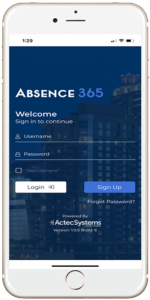 COVID-19 has created new challenges for businesses in several areas, one of which is absence management. As many businesses begin a phased return to the office while others are maintaining their remote staff, keeping track of absences and leave requests can quickly become confusing. Prior to COVID-19, it was common practice to urge sick employees to stay home. Now, it’s less a matter of should symptomatic employees stay home and more an issue of when it’s safe for them to return to the workplace and how that affects leave and absence policies.
COVID-19 has created new challenges for businesses in several areas, one of which is absence management. As many businesses begin a phased return to the office while others are maintaining their remote staff, keeping track of absences and leave requests can quickly become confusing. Prior to COVID-19, it was common practice to urge sick employees to stay home. Now, it’s less a matter of should symptomatic employees stay home and more an issue of when it’s safe for them to return to the workplace and how that affects leave and absence policies.
Federally Protected Leave and Emerging Programs
Federally protected leave programs like FMLA, disability leave, and so on still apply during COVID-19. However, the U.S. Department of Labor issued two new forms of leave to address the challenges created by the pandemic: the Emergency Paid Sick Leave Act and Emergency Family and Medical Leave Expansion Act.
Both fall under the Families First Coronavirus Response Act (FFCRA), which grants up to 80 hours of paid sick leave to employees who have to quarantine due to a government order or at the recommendation of their physician. Employees experiencing COVID-19 symptoms and seeking treatment also qualify for this kind of leave.
FFCRA also offers up to 80 hours of paid sick leave at two-thirds of employees’ regular income if they are unable to work because they have to care for a quarantined individual or child due to school and childcare closures. Employees can seek an additional 10 weeks of paid leave at two-thirds of their regular income if their child’s school/care facilities remain closed due to COVID-19 so long as they have been employed for at least 30 days. FFCRA is available through the end of the 2020 calendar year and employers can acquire a payroll tax credit for 100% of the amount.
Tracking Employee Leave Requests
Tracking leave requests, remaining compliant with shifting Federal and state employee leave laws, all while keeping the workforce healthy will quickly overwhelm HR departments. Actec developed the app Absence 365 to meet businesses’ absence management needs during these stressful times. This customizable app allows employees to submit leave requests and centralizes all absence notifications in one location. In addition to remaining compliant, the app can also help employers recognize trends to enact effective change within their company. Contact us to learn how we can help meet your business’ absence management needs.

 Absenteeism in the workplace is a challenge all businesses need to be ready to take head-on. Letting attendance problems slide can lead to a productivity crisis as well as spread like an infection to other employees. However, preventing absenteeism is a lot simpler than many companies realize. By implementing flexible schedules, employers can see an uptick in punctuality, productivity, and more.
Absenteeism in the workplace is a challenge all businesses need to be ready to take head-on. Letting attendance problems slide can lead to a productivity crisis as well as spread like an infection to other employees. However, preventing absenteeism is a lot simpler than many companies realize. By implementing flexible schedules, employers can see an uptick in punctuality, productivity, and more. Absence reporting and absence management have become increasingly complex during the COVID-19 pandemic. How has your organization been adapting? In the past, getting a complete picture of your absence data required phone calls to various managers. Most companies had little idea which employees showed up to work on a given day.
Absence reporting and absence management have become increasingly complex during the COVID-19 pandemic. How has your organization been adapting? In the past, getting a complete picture of your absence data required phone calls to various managers. Most companies had little idea which employees showed up to work on a given day. As more states issue stay-at-home orders due to COVID-19, many businesses are trying to implement work from home programs. This will allow them to keep operations going while complying with CDC recommendations for social distancing. While there are many benefits to working from home—no commute being one of the biggest ones—there are also several hurdles employees need to deal with in order to remain effective.
As more states issue stay-at-home orders due to COVID-19, many businesses are trying to implement work from home programs. This will allow them to keep operations going while complying with CDC recommendations for social distancing. While there are many benefits to working from home—no commute being one of the biggest ones—there are also several hurdles employees need to deal with in order to remain effective. The novel coronavirus has made headlines for weeks and doesn’t show any signs of slowing down. With infected Americans returning home from abroad, experts say it’s not a matter of if the virus spreads across the country but when and how severe the effects will be. The CDC confirmed the first case of the illness in the United States with no known origin—the individual hadn’t recently traveled to China or had close contact with anyone suffering from the illness. While the CDC hasn’t confirmed this is an instance of community spread, it’s a harbinger of illnesses to come.
The novel coronavirus has made headlines for weeks and doesn’t show any signs of slowing down. With infected Americans returning home from abroad, experts say it’s not a matter of if the virus spreads across the country but when and how severe the effects will be. The CDC confirmed the first case of the illness in the United States with no known origin—the individual hadn’t recently traveled to China or had close contact with anyone suffering from the illness. While the CDC hasn’t confirmed this is an instance of community spread, it’s a harbinger of illnesses to come.